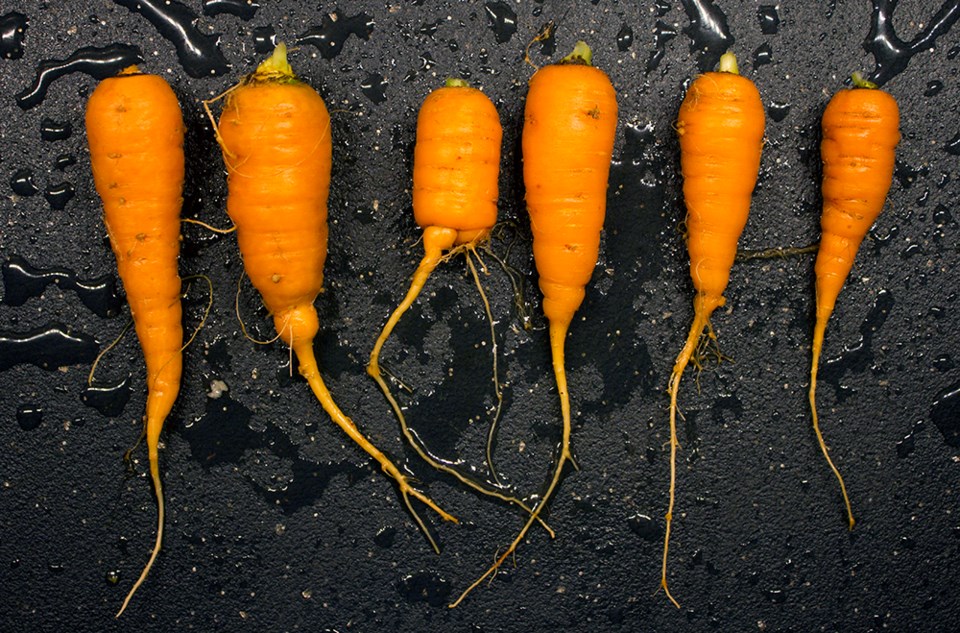Vegetable seed listings are now a glorious circus of heirlooms, new colours, worldwide sources and increased resistance to pests. Plant breeders are also tackling solutions to climate problems in small garden spaces, ornamental vegetables are a wonderful bonus (at least until you harvest them).
Peppermint chard is ahead of this game since you can cut-and-come again till frost. Its stems are red at the base merging up into white.
For container gardeners, this type of food crop is very practical. Cos (a.k.a romaine) lettuces such as the red-tinged Paris Island can also keep on producing for many weeks if you harvest the oldest, outside leaves first. I have also seen red cabbage used this way in containers.
Coloured carrots are always offered separately, but some catalogues list a “rainbow blend” of carrots, which gives a long harvest since different kinds mature at various times. Beet collections in mixed colours also offer the same extended harvest.
There’s also the new cauliflower Graffiti, which is said to be deep purple and show an improved tolerance for heat. Different colours apparently show unique qualities. Lime-green cauliflowers are said to accept low-nitrogen soil while orange heads demonstrate high levels of beta-carotene.
Purple-tinged leeks are popular now, and not entirely for their beauty. They’re also exceptionally cold hardy and are sold under many names including the French heirloom Blue Solaise and Darcy’s Purple Leek.
For brilliantly coloured salads, radishes have a lot to offer. Starburst (a “watermelon” type) has red flesh inside white skin. The heirloom Black Spanish Round has white flesh and black skin, while White Icicle grows an all-white root up to 15 centimetres long.
The Rat-Tail heirloom radish dating at least from 1860 is still occasionally listed. The roots aren’t edible. But the seed pods give a lengthy harvest and are crunchy, nicely peppery and best when they reach about 25 cm long.
Edible pod peas are very practical wherever you grow them because if you miss the early pod harvest you can still use them as shelled peas. Some heirloom pod peas are available with interesting pod colours and sometimes two-tone flowers. These names include Blue Pod Desiree Pea, Dwarf Grey Sugar, with purple flowers on an approximately 90 cm plant, and Golden Sweet Edible Pod, with yellow pods and two-tone purple flowers.
Winter hardiness can be a major issue with kale in some areas, especially if it’s combined with intolerance of wet soil. Winterbor kale is one of the favourites for hardiness and productivity.
But the English heirloom Dwarf Green Curled (a.k.a. Dwarf Curlies) promises more. This one is said to tolerate cold, windswept unsheltered gardens with wet, poor soil. It’s described as growing up to 45 cm with tender, delicate leaves.
Some edible and pretty vegetables may be too much of a good thing. Golden-leaved purslane is pretty and delicious but almost as invasive as the green form. Another dubious blessing is the heirloom Rampion (Campanula rapunculus) – once popular for crisp, white, edible roots and long spires of purple bells.
This one leaves desperate gardeners in its wake as it steadily takes over gardens, roadsides and cracks in asphalt parking lots.
Anne Marrison welcomes gardening questions sent to [email protected]. Please include your city or region.



